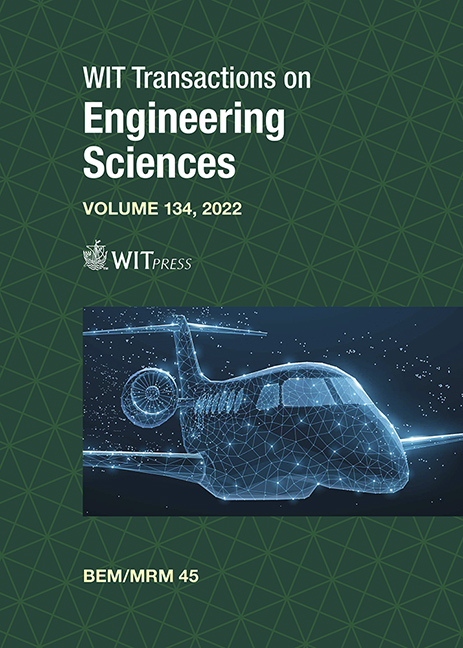IMPLICATIONS OF STOKES–CARTAN THEOREM TO TIME-HARMONIC ACOUSTIC BOUNDARY INTEGRAL EQUATION FORMULATIONS
Price
Free (open access)
Transaction
Volume
134
Pages
12
Page Range
81 - 92
Published
2022
Paper DOI
10.2495/BE450071
Copyright
Author(s)
PAUL J. SCHAFBUCH
Abstract
Direct boundary integral equation (BIE) formalisms for wave radiation and scattering have been stable and universally accepted for decades. Yet, the classic separation of variables (SOV) solutions for acoustic radiation and scattering from spheres do not always agree with BEM results. For certain conditions, the boundary acoustic field predicted by low-frequency SOV and BEM methods match exactly and for other situations predicted fields by the two methods are complex-conjugates of each other. While this difference is subtle, modern BEM literature has not cited the transfer of known mathematics to this engineering application. Tracing signs within BEM code is daunting. To create a lucid and reproducible record of the issue and its resolution, this paper presents an analytical BIE solution for spherical geometry based on a Legendre polynomial simplex element and a power series of the spatial phase term of the Helmholtz operator Fundamental Solution. Optical theorem reasoning suggests the traditional BIE approach is the method in error. The core of this issue is the application of the divergence theorem (strictly true only for real-valued functions) to time-harmonic (complex-valued) formulations. The conjugation of spatial derivatives of a complex-valued field can be understood from Wirtinger derivatives and Dolbeault operators. This issue manifests itself when the Sommerfeld radiation condition is applied for unbounded domains. Exterior calculus ideas properly unite, generalize and extend a variety of related classical theorems including divergence, Cauchy’s integral theorem from complex analysis, and Green’s identities used in constructing a BIE. The resulting Stokes–Cartan theorem is properly applied to acoustic scattering in 3D within this paper and invokes corrections which match BIE and SOV solutions for the low frequency problems investigated.
Keywords
boundary integral equation, time-harmonic, acoustic, scattering, Kirchhoff–Helmholtz integral, Wirtinger derivative, optical theorem





